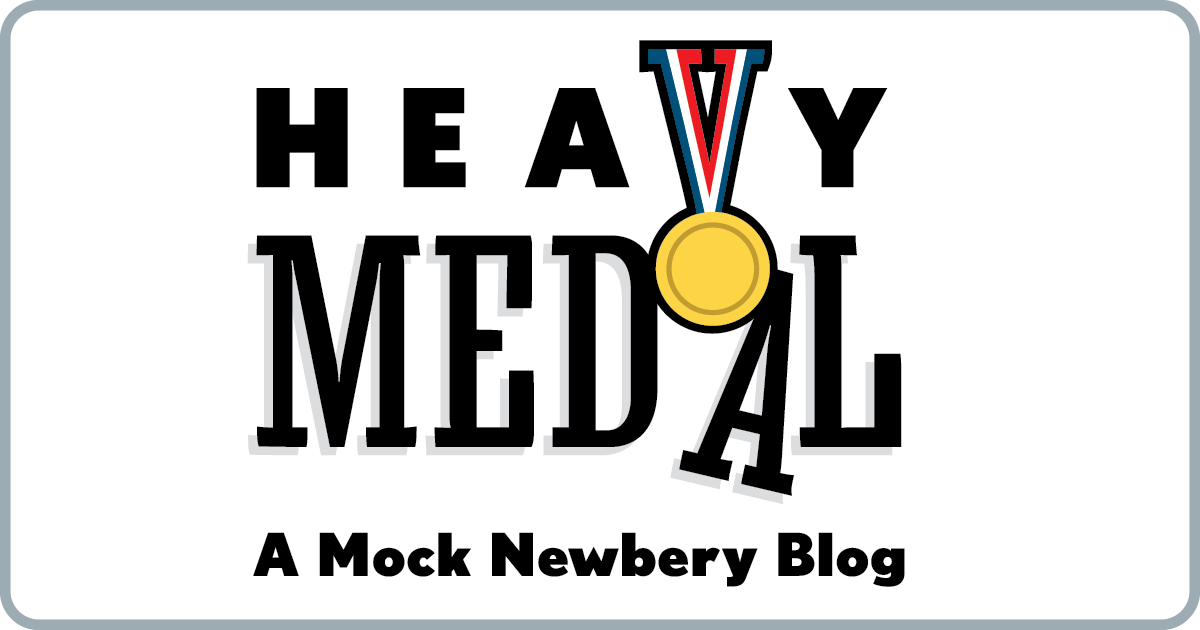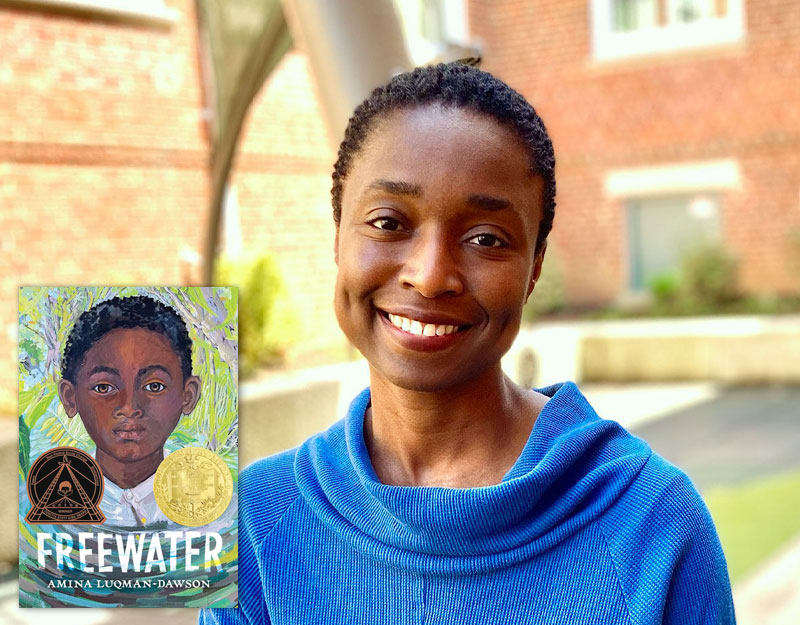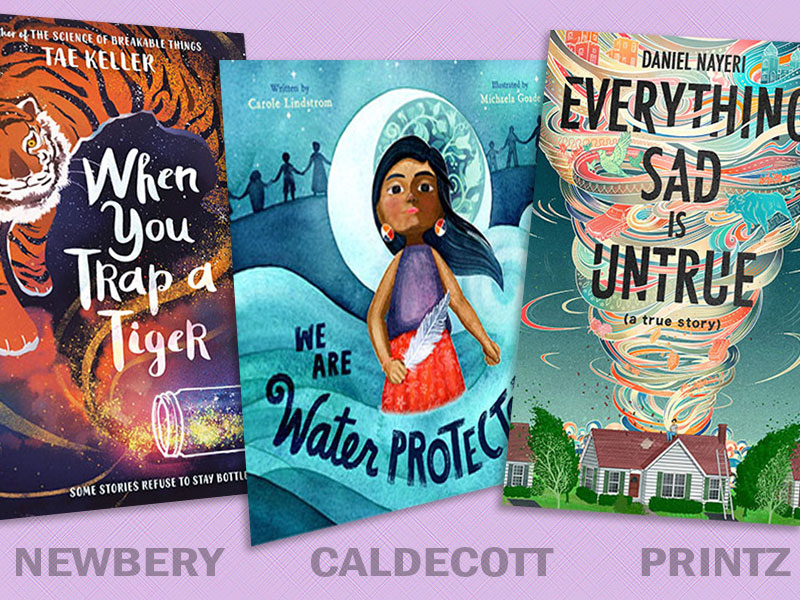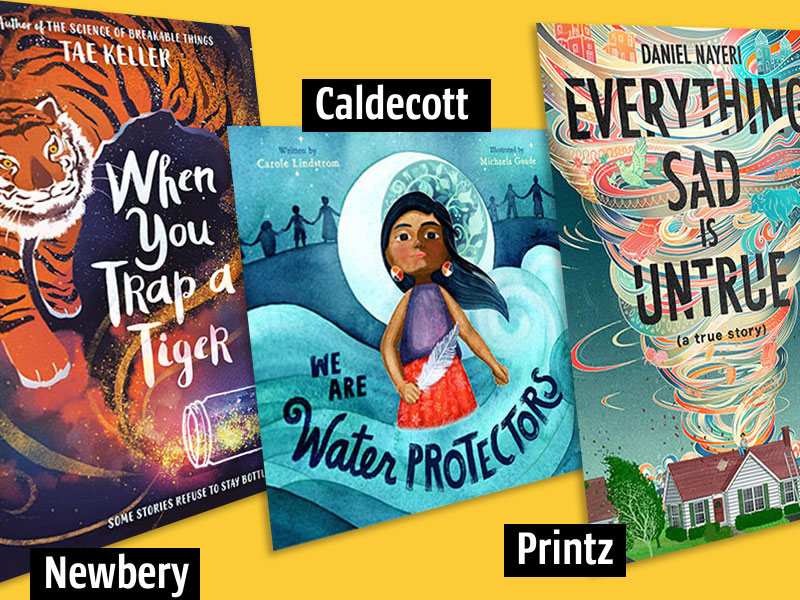Martians, Butterflies, and the Depths of the Ocean
 When Roxanne, Sharon, and I looked ahead to this year’s Heavy Medal season we discussed how deeply we should dig into each book in the early days. When you read a book you’re really enthusiastic about, it’s tempting to explore every possible example of qualities that might make it “the most distinguished contribution to American literature.” But, no, we’ll try not to do that. Not yet, anyway. We want to give readers time to track down and read the books we highlight. Also, we want to leave more room for the back-and-forth, one-idea-leads-to-another kind of comments that are most helpful in the committee setting that we’re trying to mirror as best we can.
When Roxanne, Sharon, and I looked ahead to this year’s Heavy Medal season we discussed how deeply we should dig into each book in the early days. When you read a book you’re really enthusiastic about, it’s tempting to explore every possible example of qualities that might make it “the most distinguished contribution to American literature.” But, no, we’ll try not to do that. Not yet, anyway. We want to give readers time to track down and read the books we highlight. Also, we want to leave more room for the back-and-forth, one-idea-leads-to-another kind of comments that are most helpful in the committee setting that we’re trying to mirror as best we can.
In early December we’ll announce our Heavy Medal short-list and long-list. At that time we’ll revisit some of the standout titles and have time for more in-depth discussions. For now, though, we’ll introduce the titles that catch our attention, share a bit about why we think they stand out, and invite comments from those who have read the books. Only two nonfiction books received more than two reader suggestions in our pre-September “suggestions” poll, so I decided to start with three excellent informational titles that I’ve been especially impressed by:
ADVERTISEMENT
ADVERTISEMENT
SPOOKED: HOW A RADIO BROADCAST AND THE WAR OF THE WORLDS SPARKED THE 1938 INVASION OF AMERICA by Gail Jarrow.
In the Newbery Terms and Criteria (which we’ll refer to very often on this blog), Committee members are directed to consider “presentation of information, including accuracy, clarity, and organization,” among other literary qualities. I especially appreciate the “organization” found in SPOOKED. The way the author arranges and unveils the facts is creative and highly effective. She starts with a teaser chapter, like a lot of kids’ nonfiction does, but leaves out the key information that the “invasion” was really just a radio show. Even readers who know that already are thrust right into the point of view of those listeners in 1938 who didn’t know, and responded accordingly. Then we jump back in time for fascinating background about Houseman and Welles, the show they developed, and the H. G. Wells novel. That all sets the stage for the broadcast itself, presented in two extended illustrated sections, set apart by yellow pages. Readers are completely stuck in the studio on those pages, just as Welles and the crew are. It’s in the in-between chapters we learn about the surprising events the radio show has stirred up outside the studio. Like the best history titles do, this book has an immediacy that brings readers right back into a time and a situation that is so different from their own experience…but also has relevance to today’s world.
THE GIRL WHO DREW BUTTERFLIES: HOW MARIA MERIAN’S ART CHANGED SCIENCE by Joyce Sidman
Joyce Sidman is best known for poetry and won a 2012 Newbery Honor for DARK EMPEROR (mostly poetry with some nonfiction prose). This time she tells the fascinating story of Maria Merian, scientist, artist, and explorer from the 17th century. Sidman’s language brings this biography to life, and she uses it in different ways. The main text is both informative and eloquent:
“..she had only the gardens and fields to find what she needed, and her own paintbrush to record it.” (23)
But it’s not so language-heavy that the narrative loses momentum. Sidman uses a slightly different style for the sidebars: more straightforward, but still clear and not a jarring departure from the rest (as sidebars can sometimes be). She opens each chapter with a poem; these stand on their own just fine, but as a whole they trace both the development of a butterfly and the emergence of a scientist and artist. In telling about Maria, Sidman also explores the roles of women, science, religion and art, which were so different four centuries ago, in ways that upper elementary readers can follow and absorb.
OTIS AND WILL DISCOVER THE DEEP: THE RECORD-SETTING DIVE OF THE BATHYSPHERE by Barb Rosenstocki with illustrations by Katherine Roy.
Here’s is a stellar example of narrative nonfiction in a picture book format. You can’t use too many words in a book like this, so you have to choose them carefully. Rosenstocki introduces each of the two characters separately, neatly establishing their different interests and their common goal of going “down, down into the deep.” When they get together to build and test the bathysphere, she deftly balances technical information, the personal responses of the two men, and the wonder of the journey and what they saw. She builds suspense perfectly, setting up the climactic point where they reach 800 feet:
“They flipped on the Bathysphere’s searchlight. Their eyes followed the pale yellow beam that scattered…down, down into the deep. What did the deep ocean look like? Otis and Will knew first.”
Those lines work perfectly with the illustrations, the double sided wordless gatefold, and the turn of a page. Further discussion of this book in Newber terms might address the impact of illustrations for a decision that must be made “primarily on the text,” as well as the weight we should give to the informative back matter…but I’ll restrain myself. For now.
If you’ve read any or all of these, feel free to share reactions in the comments below. Also please let us know if there are other nonfiction contenders we should be looking at.
Filed under: Book Discussion
About Steven Engelfried
Steven Engelfried was the Library Services Manager at the Wilsonville Public Library in Oregon until he retired in 2022 after 35 years as a full-time librarian. He served on the 2010 Newbery committee, chaired the 2013 Newbery Committee, and also served on the 2002 Caldecott committee. You can reach him at sengelfried@yahoo.com.
ADVERTISEMENT
ADVERTISEMENT
SLJ Blog Network
2024 Books from Pura Belpré Winners
Passover Postings! Chris Baron, Joshua S. Levy, and Naomi Milliner Discuss On All Other Nights
Winnie-The-Pooh | Review
Parsing Religion in Public Schools
Crafting the Audacity, One Work at a Time, a guest post by author Brittany N. Williams
ADVERTISEMENT








I’m so glad you’re back. I need direction in selecting the books for our school Mock Newbery. Right now, I don’t have a clue about which books I’ll be choose.
Did you see the list that we compiled? Many of them would make for great selections of Mock Newbery in a school.
Roxanne,
I did see the list you compiled. Now my reading list has become very long. My problem is going to be paring the list down to a manageable number of books. So many of them sound good this year. I didn’t read as much as I usually do this past summer.
Just finished SPOOKED! and have now read all three. I think these books along with the discussion of Gantos’ audiobook and my opinion about HARBOR ME raise a potential consideration that I imagine will only come more to the fore as time goes by: that the Newbery must be for a traditional book. Graphic novels are only the tip of the iceberg. I read SPOOKED! as an ebook and noted that in the excellent backmatter section, the links to sources, especially primary audio sources, were live. And that got me thinking, as good as SPOOKED! is, what might it have been like as a mixed-media creation, with appropriately-placed audio. Could there be a truly distinguished presentation of this material without the experience of Welles’ inimitable voice or the experience of radio’s heyday? Can any evocation of the deep sea compete with the wonderment of video in, say, the BBC Blue Planet series? There are so many options for getting information now and I think that is one of the handicaps for informational texts being “distinguished” enough for Newbery consideration. I was one of the people who suggested BOOTS ON THE GROUND and that’s an example where I think subject matter does harmonize better with text and a book format. Same with the other non-fiction suggestion, CHASING KING’S KILLER. I don’t really know—haven’t thought about this a lot and this is just getting out an initial gut feeling.
I know you said you haven’t thought about this a lot, and are just throwing it out there, but it’s interesting so I’ll bite… Leonard, are you trying to say that books like SPOOKED and OTIS AND WILL shouldn’t win the Newbery because there are other formats of material out there that cover the same topic in a more distinguished, powerful way? If so, I’m not sure I agree with that. I don’t think the Newbery should have to compete with other formats. The same way we can’t really compare the books under consideration to titles from previous years, we really shouldn’t be comparing them to other works that aren’t even necessarily literature.
I agree, OTIS AND WILL can’t compete with Blue Planet, but it doesn’t have to. It’s just competing against other informative picture books published in 2018. Right?
Hi Mr. H. Question: do you think the best informational picture book in a given year is just as Newbery-worthy as the best middle grade novel? I sort of felt when Jonathan Hunt was here, that was one of the directions he was trying to lead us — that different genres should be judged on different, genre-specific qualities, and they were all equally Newbery-worthy.
I don’t know if I agree with that. I may be old-fashioned in my own way, but I believe in Literature-with-a-capital-L and that that’s what the Newbery celebrates. I think just because something like SPOOKED! or OTIS AND WILL may be as good as they could be, given their genre and format, that being “best-in-class” does not itself mean they merit serious Newbery consideration. I invoke other media to help convey what these limitations of class are, what such books have to overcome. OTIS AND WILL isn’t directly competing with Blue Planet, but I think it would have to provoke a similar response, the kind of response one also gets with great Literature, in order for me to consider them serious Newbery candidates.
This is purely my personal feeling. I definitely get the other perspective from Jonathan and others.
Good questions. In a way, the “primarily on the text” direction from the Criteria really is a strong statement about the value of a traditional book. An assertion that yes, a really good writer should be able to take something like a radio broadcast and convey its impact primarily with words. I thought Jarrow did as much as a person could do in a book format to achieve that…but yes, Welles’ voice would have a different kind of impact. Maybe I’m being too old-fashioned, but as a reader I think I appreciate the way that written words alone can take me into the world the author describes or creates. While I would like to see that Blue Planet video, while I’m reading OTIS AND WILL I’m experiencing a different, but still pretty powerful interaction with the events. It’s an easier call for me with fiction: Quidditch matches in the Harry Potter movie are cool and all, but I was more involved and more interested when I read about them. Print fiction leaves room for imagination on the reader’s part and that can be a good thing. But nonfiction does seem different. The possible non-print enhancement Leonard suggests aren’t substitutes for text, but enhancements (at least that’s how I read it). So why not connect them? And in terms of Newbery, do the more straightforward uses of non-fiction text meet the criteria more fully because the subject can be covered more completely with words alone…?
Just read OTIS AND WILL and was blown away. It takes a lot of talent to take a story like that and present it in such a kid-friendly way without skimping on details or emotion. While I think the text works just fine on its own, the fold out page Steven references is a bit of a hill to get over for me, especially since it’s the big emotional reveal of the story.
Loved this book though, Newbery or not.